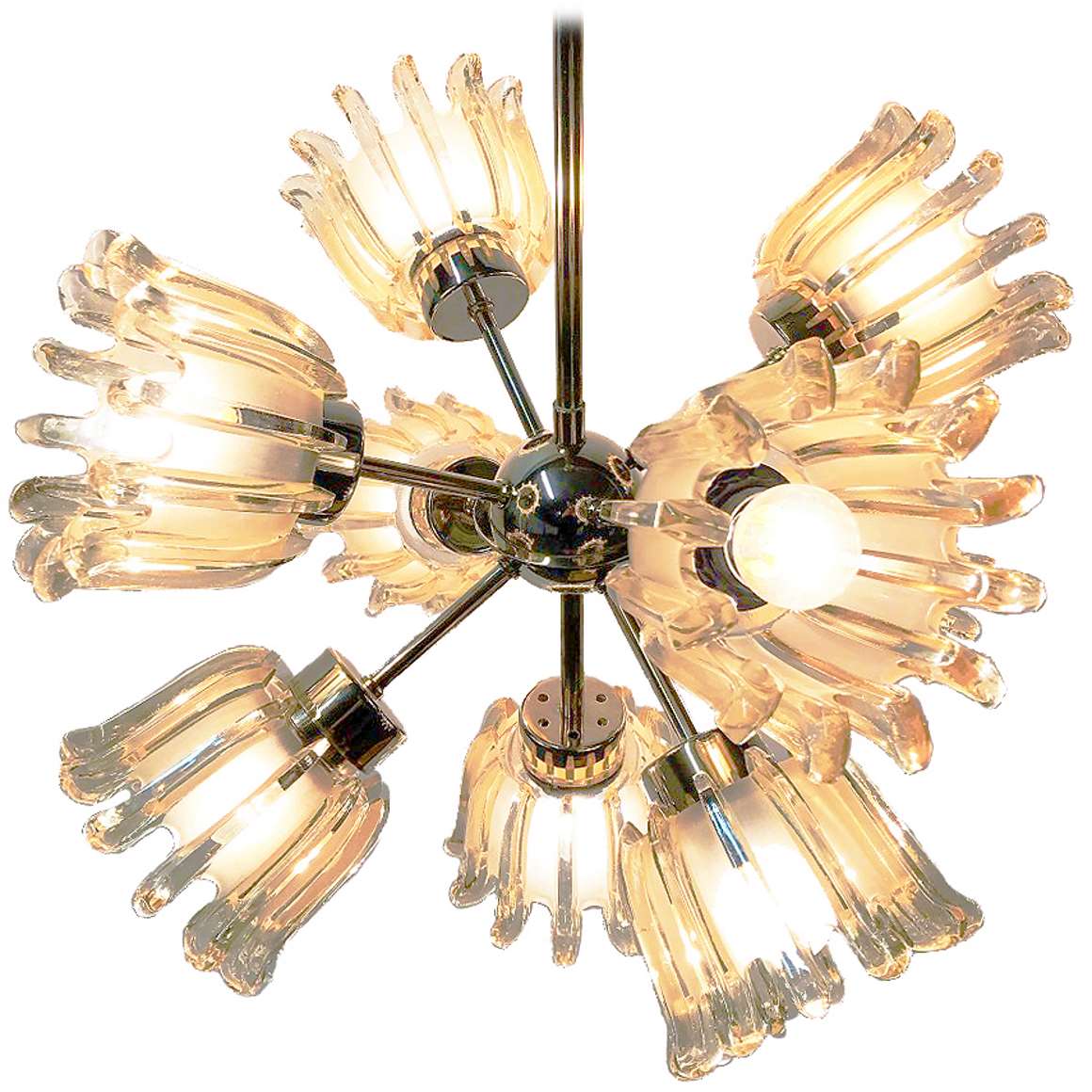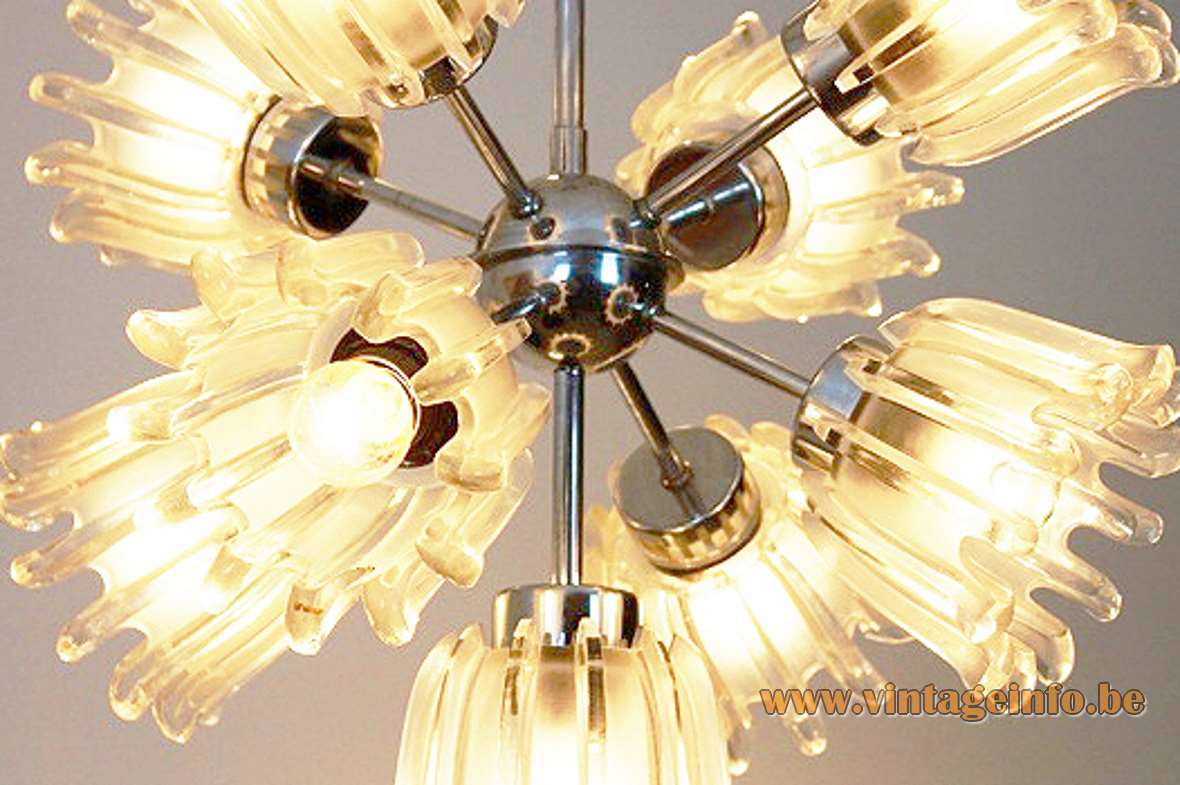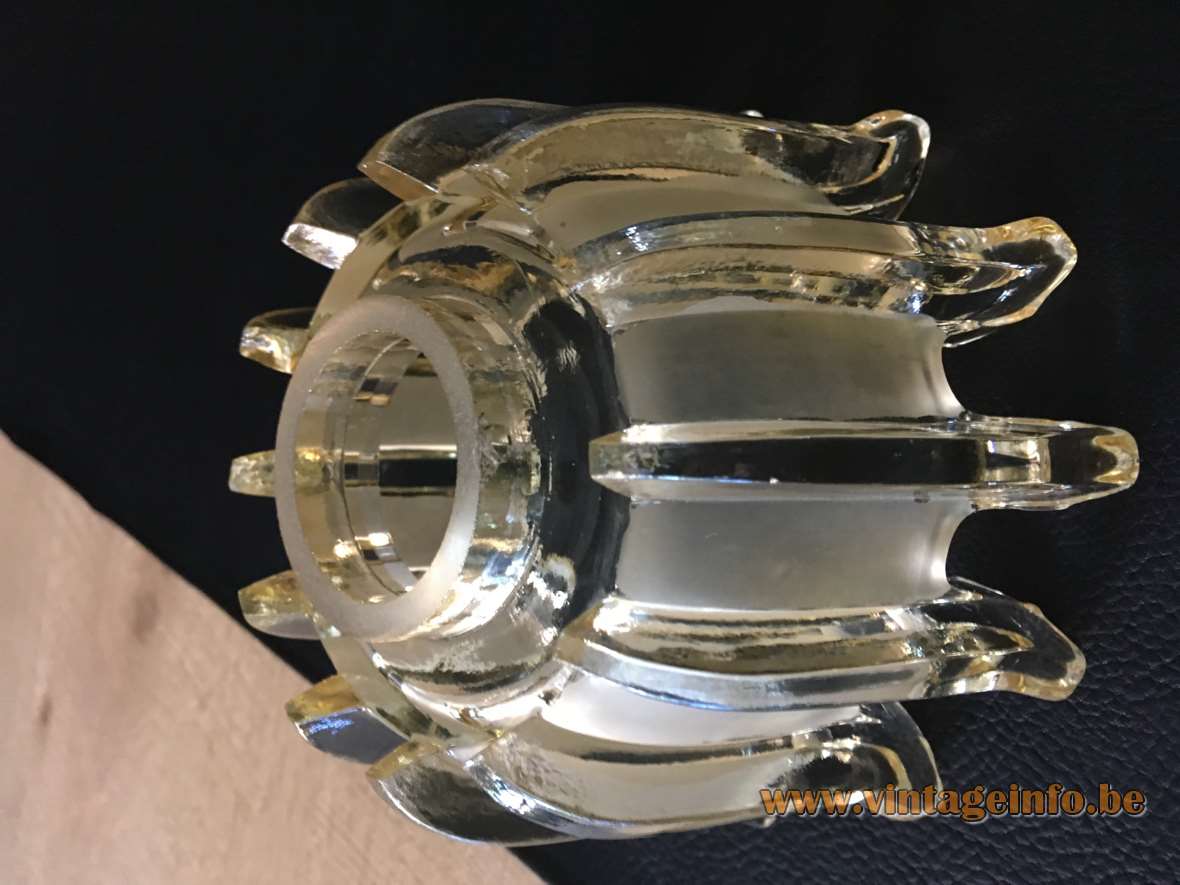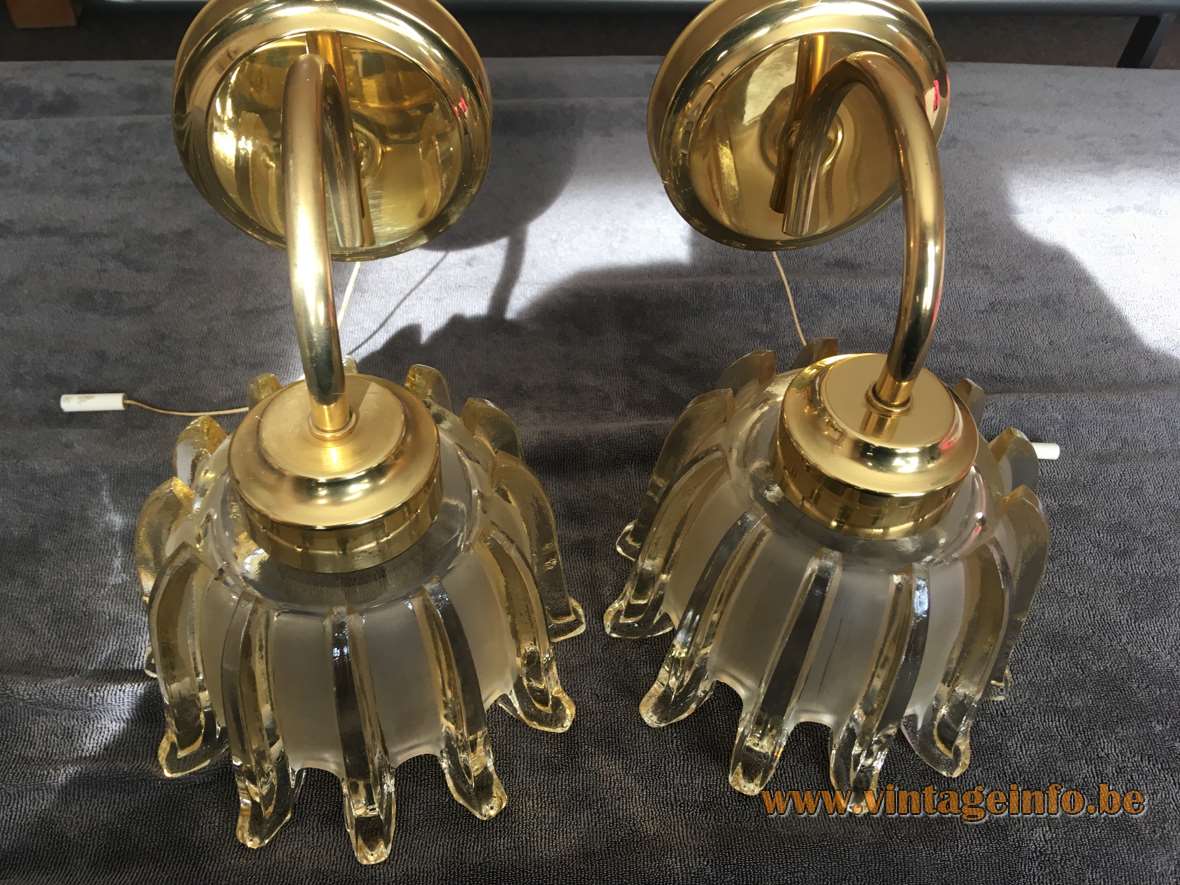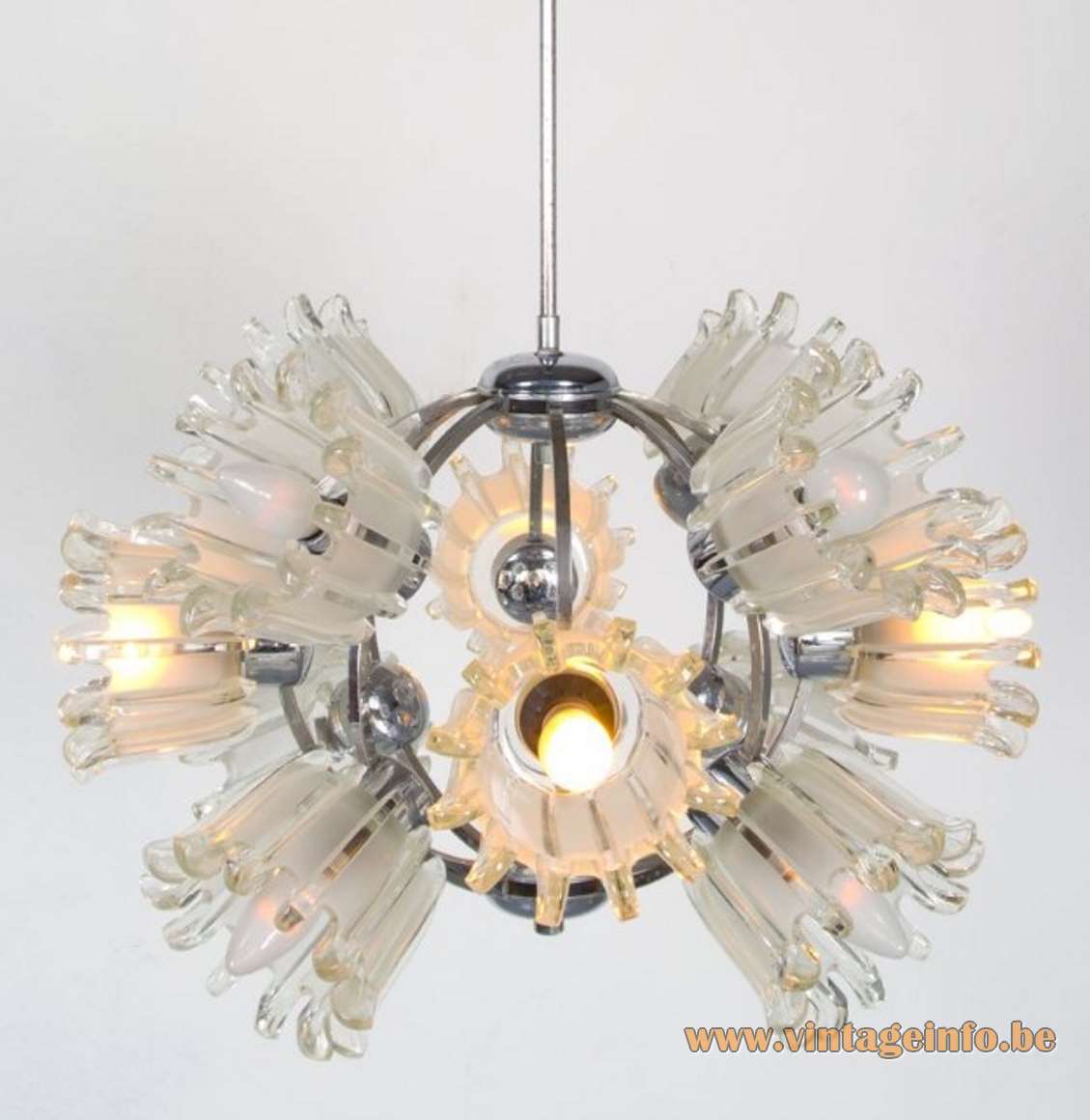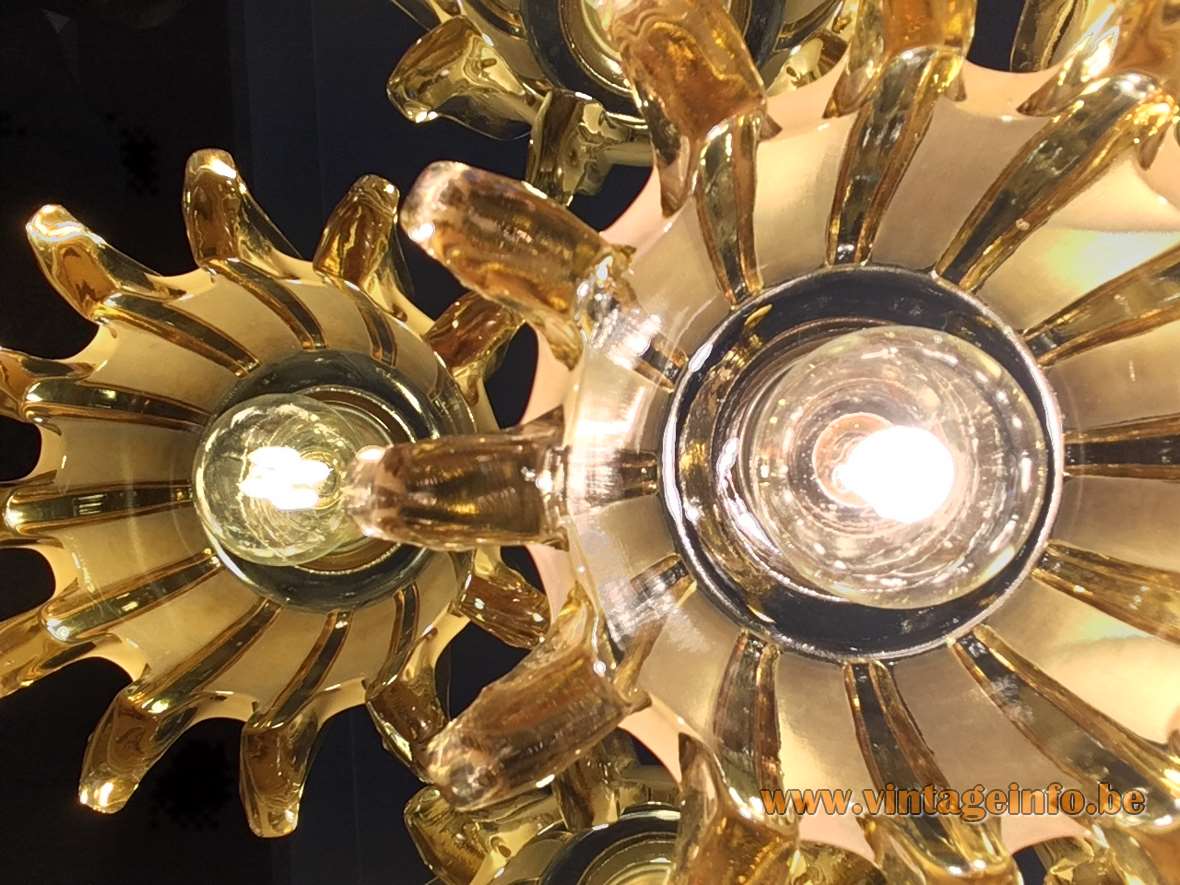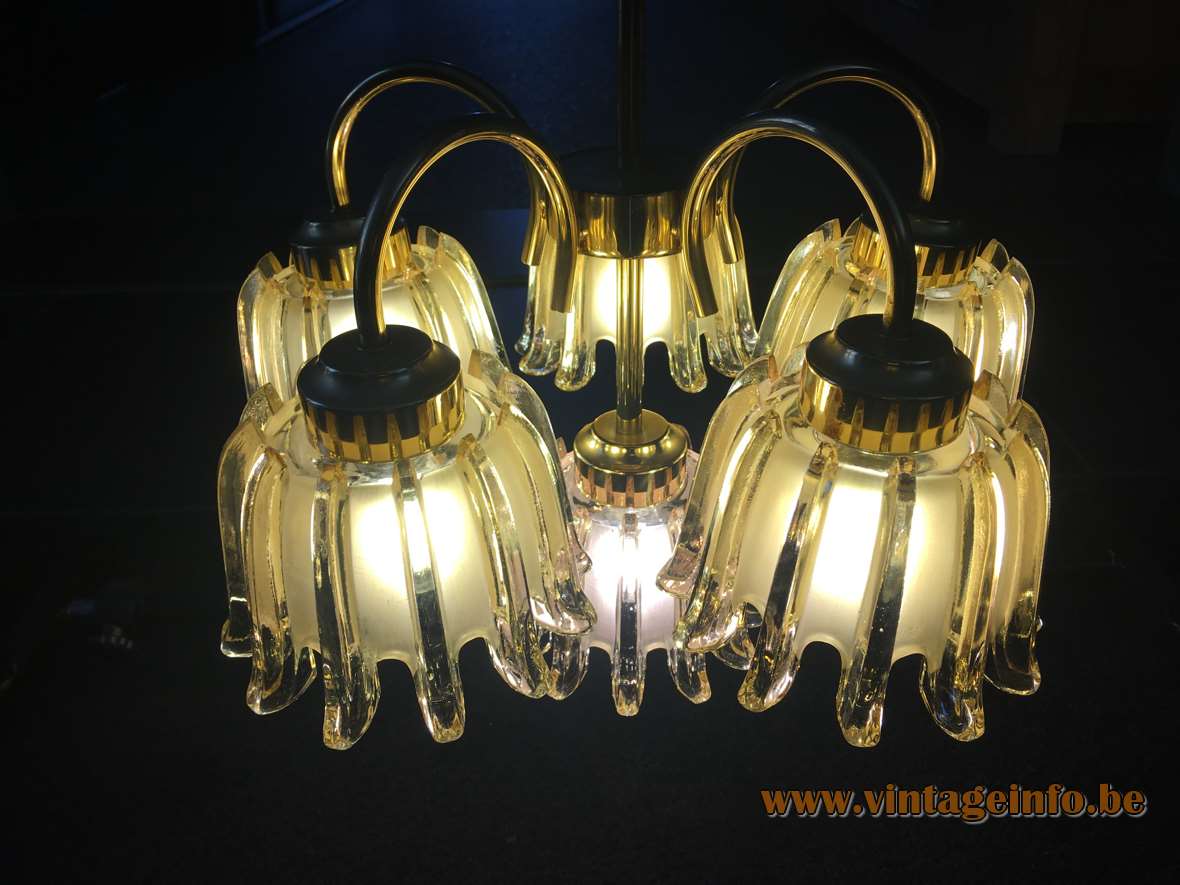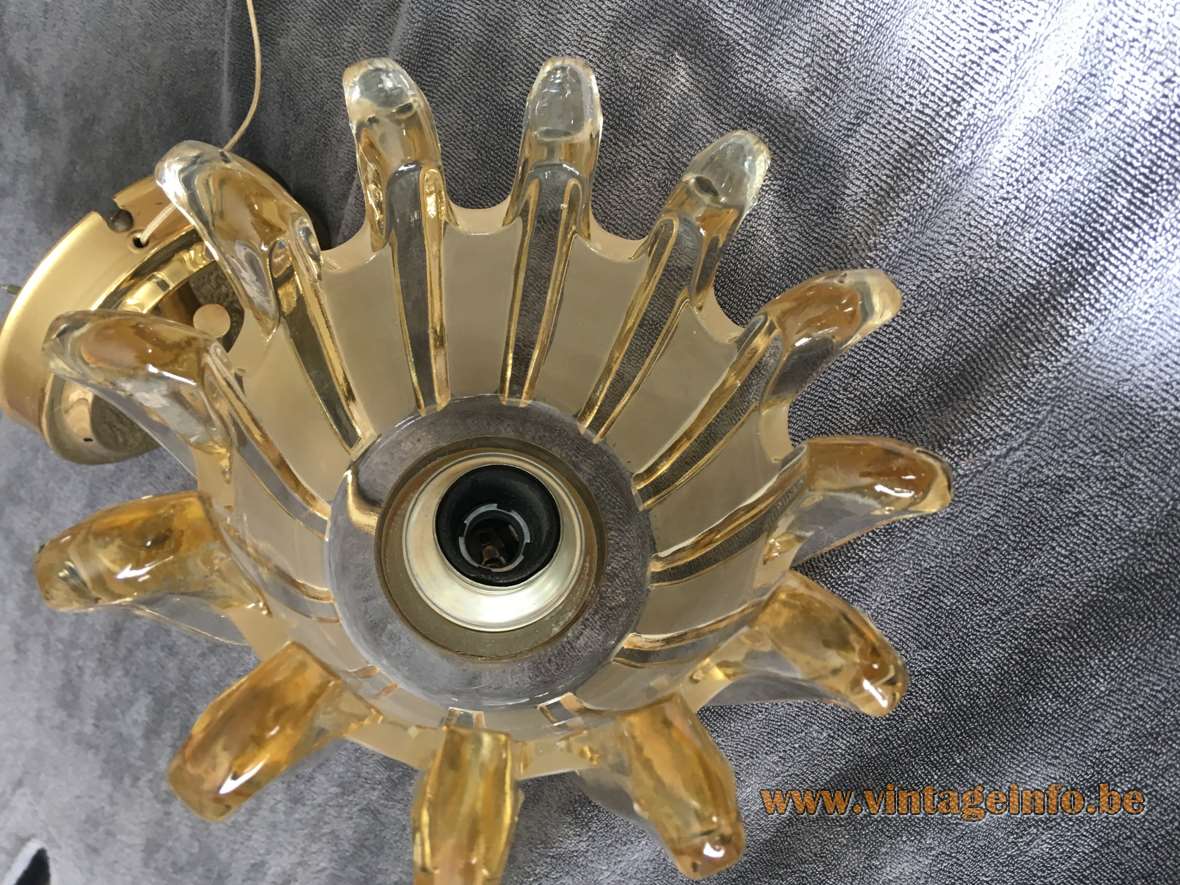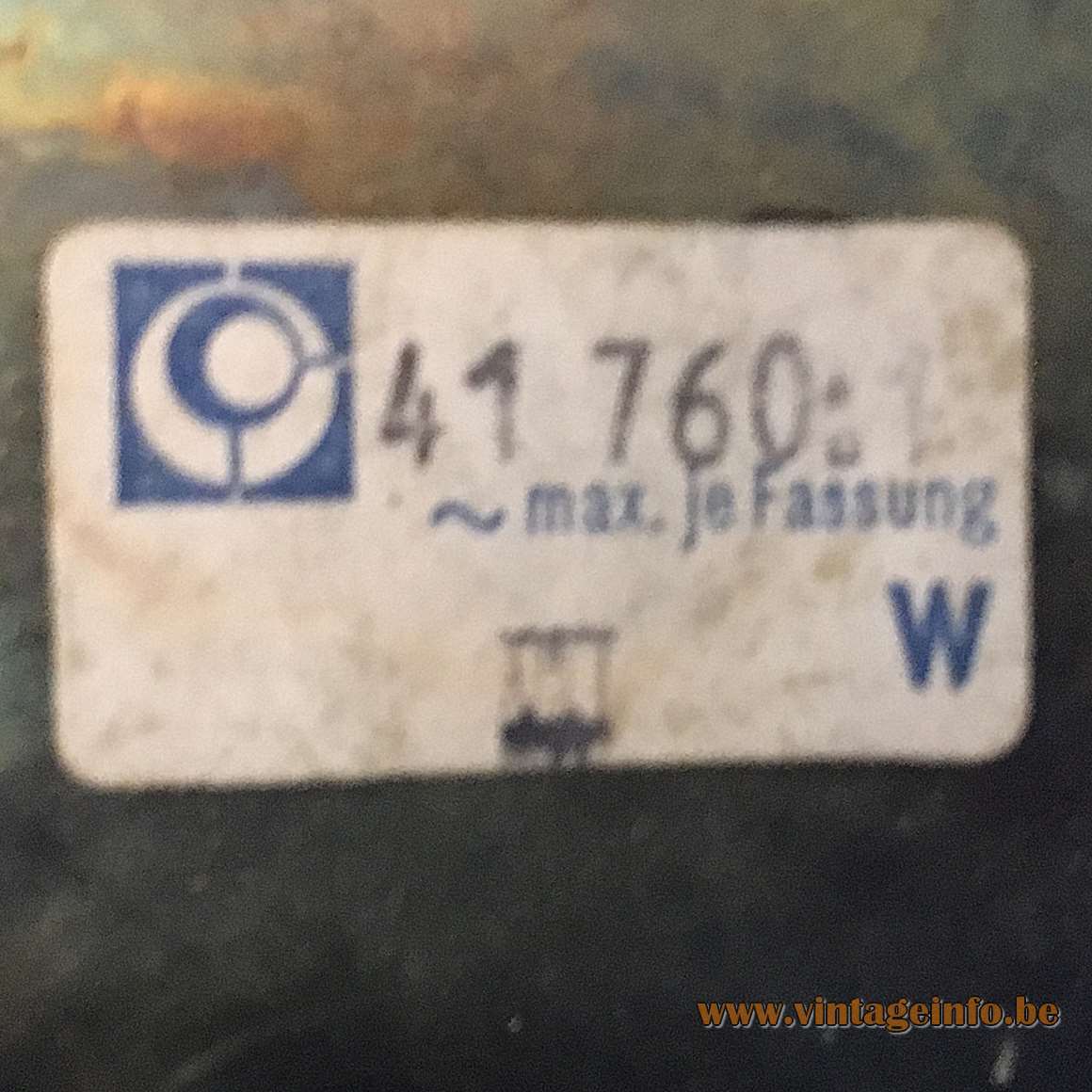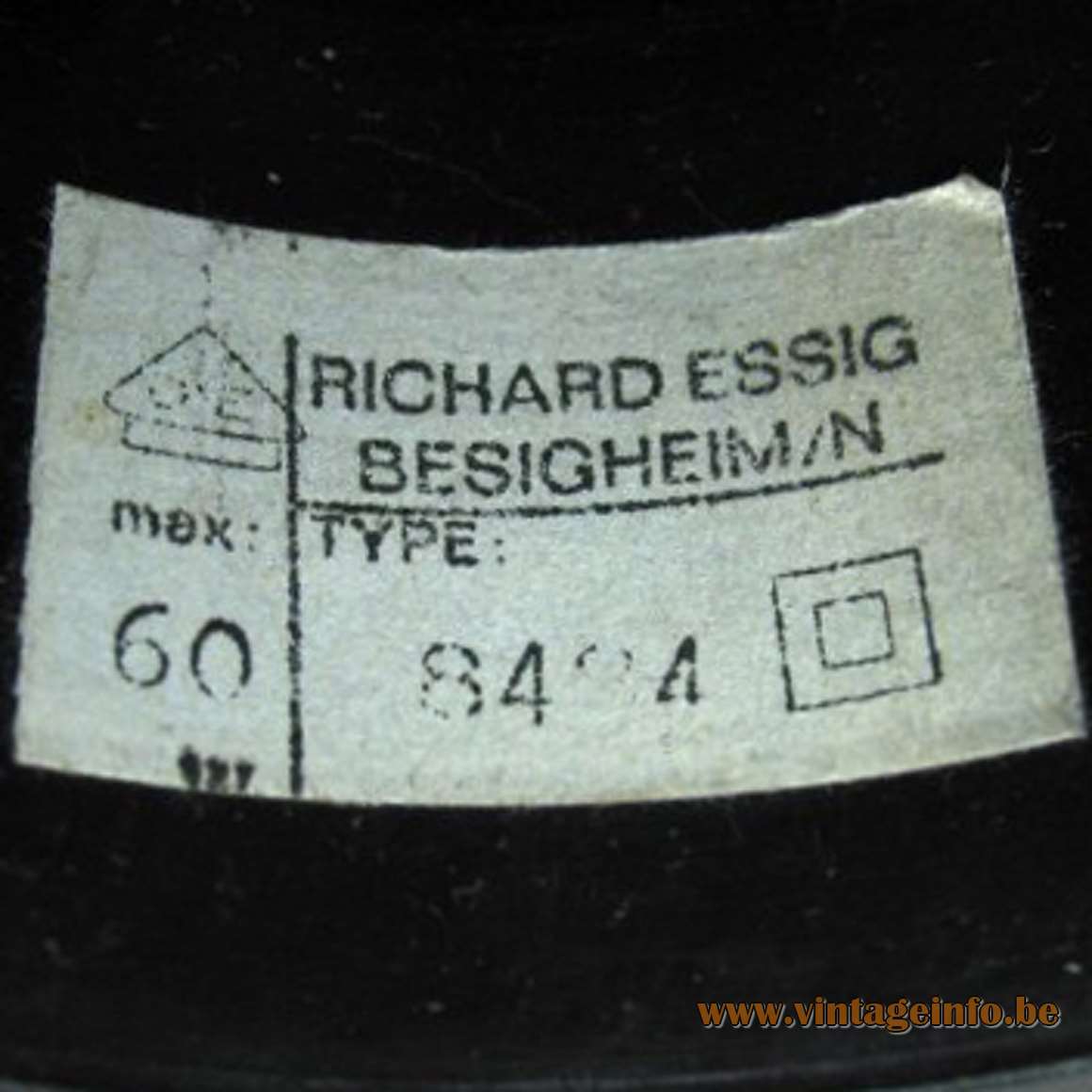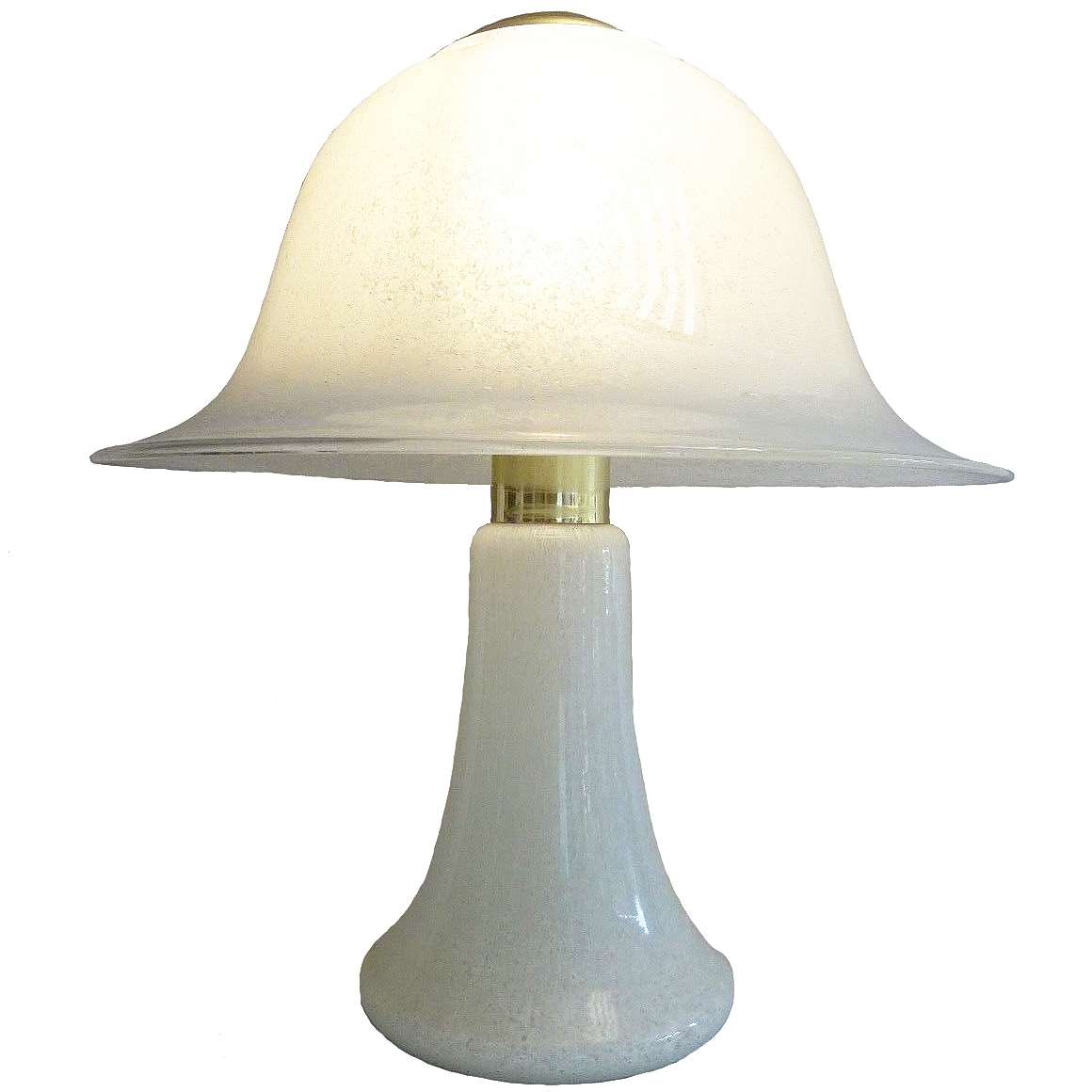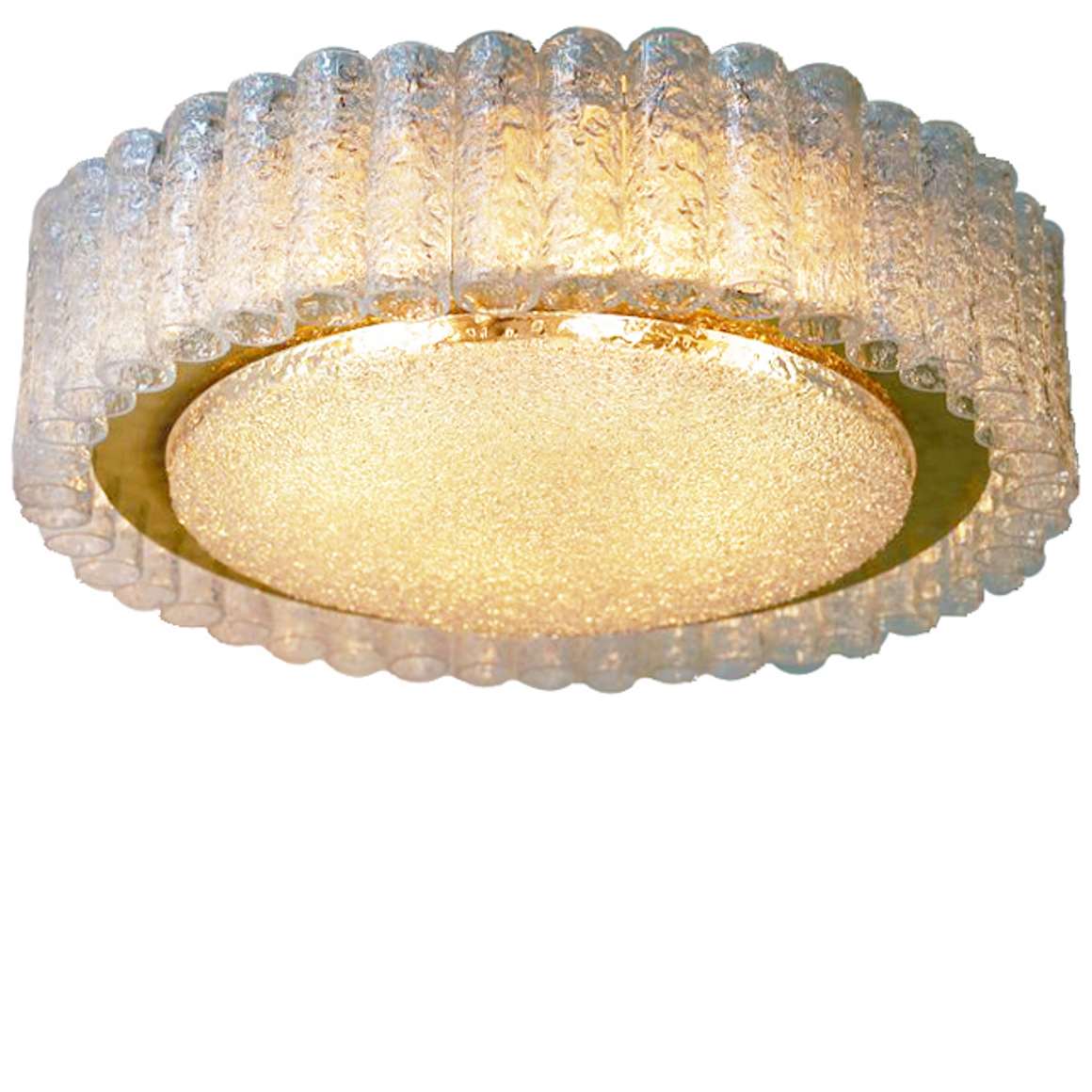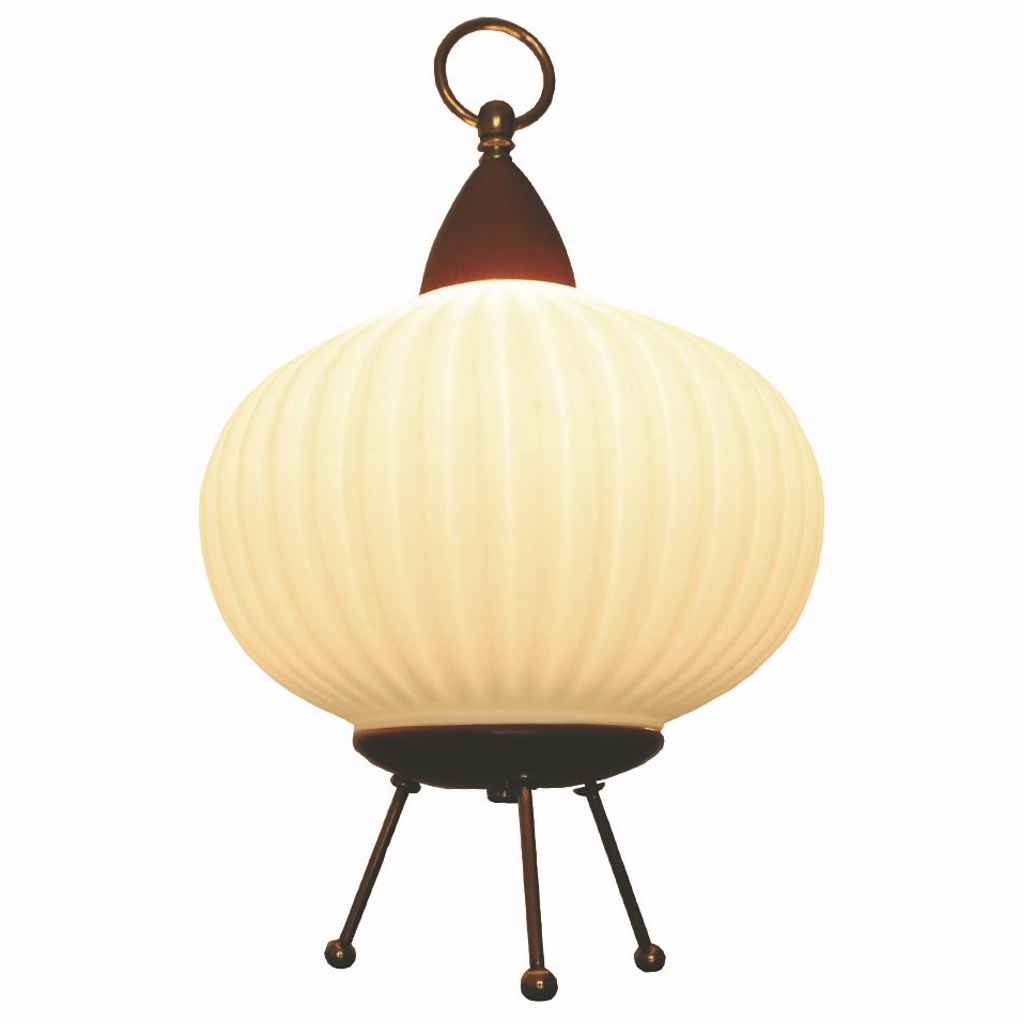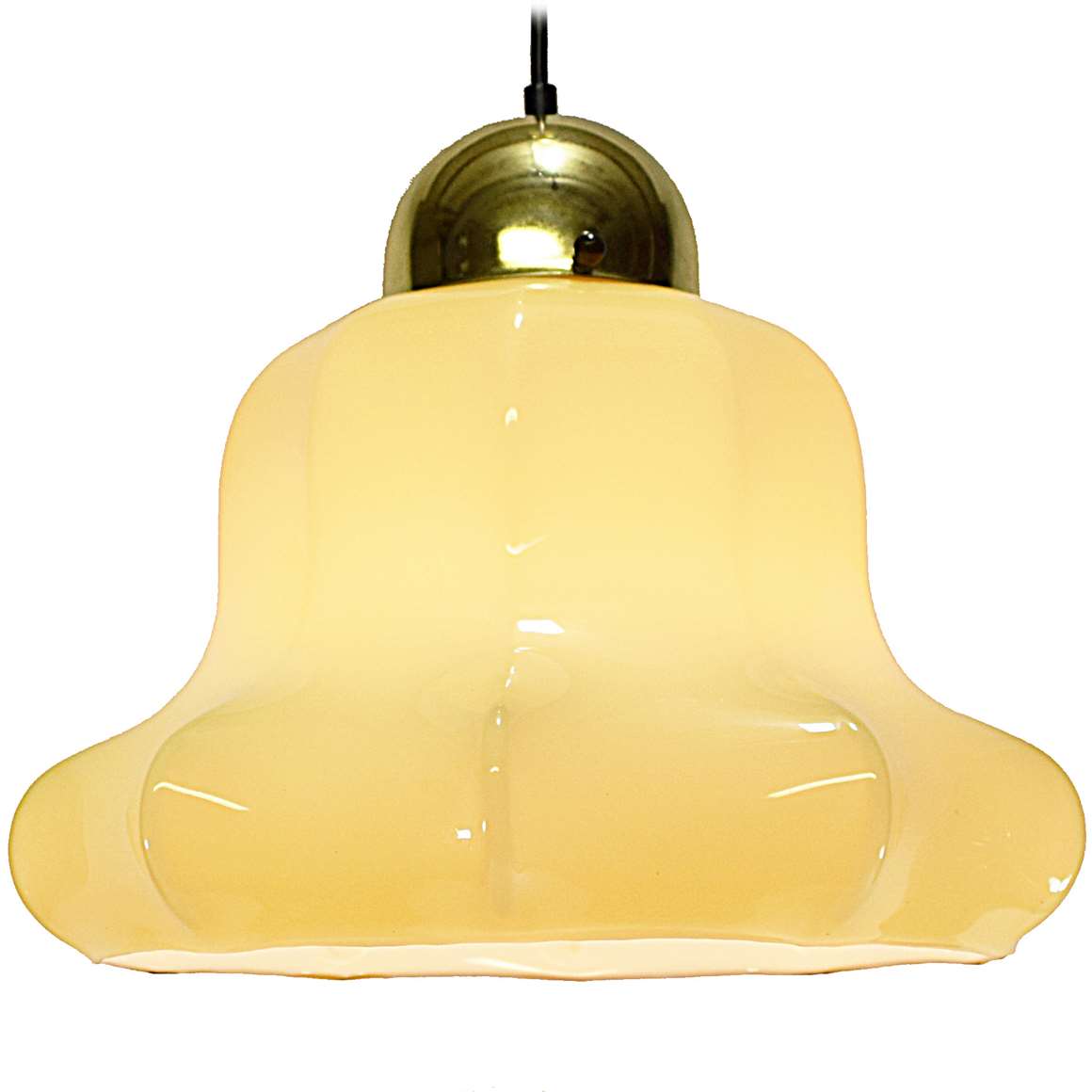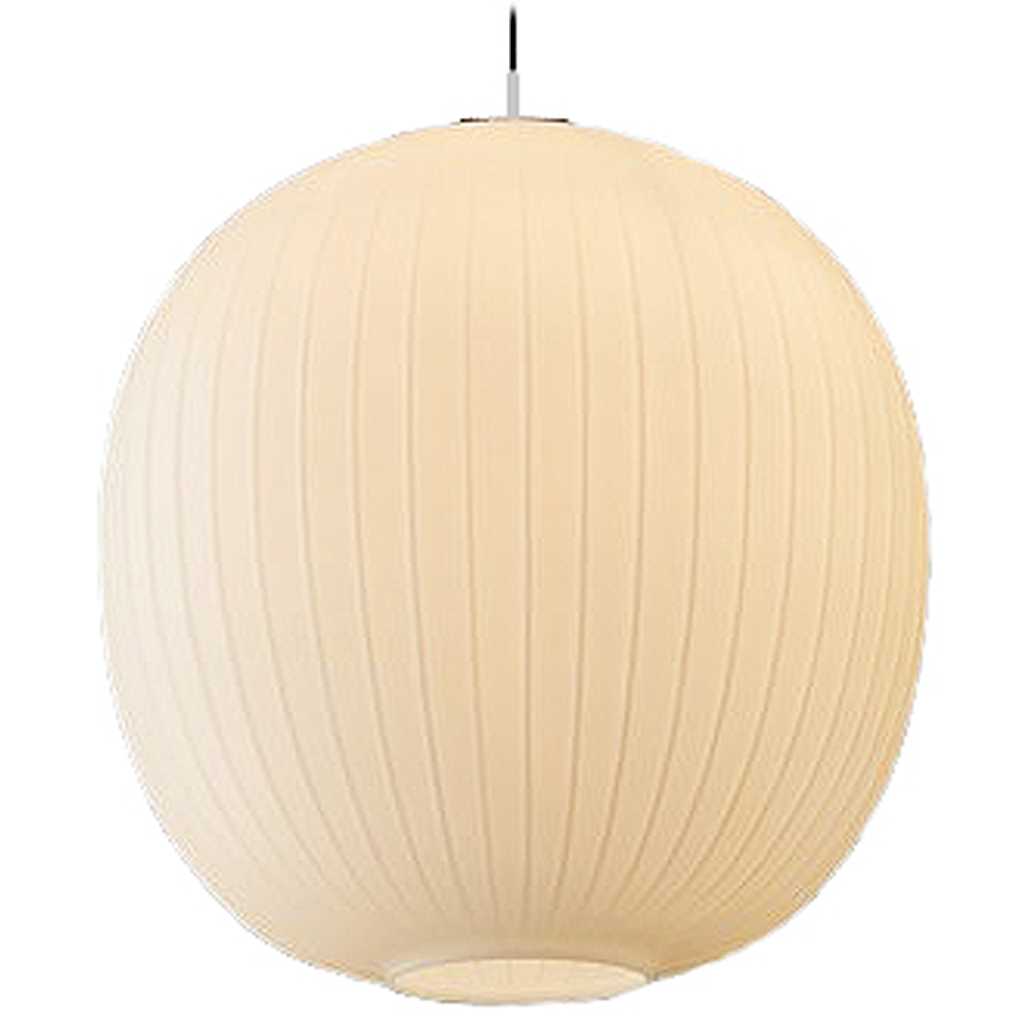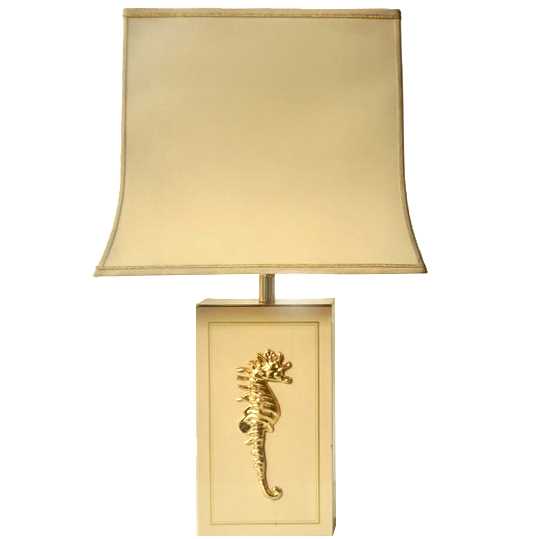Richard Essig DORIA chandelier
Labels
Gebruder Leclaire & Schafer label on the left and the Richard Essig company label found on another flower chandelier. DORIA labels are never found on these lamps.
Peill+Putzler
Glashüttenwerk Peill und Sohn was founded in 1903 in Düren, a small town in (West) Germany. Peill und Sohn merged with Putzler (founded in 1869) in 1947 as a glass works and lighting company and became Peill+Putzler Glashüttenwerke.
The company always worked with important designers such as Wilhelm Wagenfeld, William Brown, Helmut Demary, Aloys Ferdinand Gangkofner, Horst Tüselmann and many others.
In the 1950s 1500 people were working for the company. They also produced glass for other light companies in Europe, such as Raak, Amsterdam, The Netherlands.
In 1995 the production of glass and lighting moved to Slovenia, Poland and the Czech Republic. Only the trading of lamps en glass stayed in Düren. 1 year after the 100th anniversary in 2004, bankruptcy was filed.
In 2007 the name Peill+Putzler was re-used for a while for the Wagenfeld lighting of the German lighting company of Paul Neuhaus.
Today the Peill+Putzler factory is called Glashütte Düren and is converted to many other businesses and conference centre.
Leclaire & Schäfer
The Gebruder Leclaire & Schäfer company was founded in 1893 in the light capital of Germany: Neheim. Despite the fact that the company has existed for a long time, there is hardly any information available. It is even more weird that you hardly find any lamp made by them on the internet. Hopefully that will change in the future, below is the label of the company. Gebrüder Leclaire & Schäfer presumably ended business in the 1980s.
DORIA
DORIA-WERK, DORIA-Werk – Beleuchtungsglas – Beleuchtungskörper orDoria-Werkstätten, Walter Donner GmbH & Co. KG was founded after the second World War in Fürth, near Nürnberg, Germany in 1948. The name changed over the years. The internal design team was named DORIA-Studio. The company is often named Doria Leuchten.
DORIA no longer exists. The firm was declared bankrupt in 1986.
Links (external links open in a new window)
Richard Essig lamps – Google images
Massive – Wikipedia (in Dutch)
iF-Design awards for Peill+Putzler
Vintageinfo
Richard Essig DORIA chandelier
First of all, it is not a lamp by DORIA!
Materials: Chromed metal (iron) tubes and globe, made in a sputnik style. Yellowish/amber clear glass lampshades. Metal or Bakelite E14 sockets.
Height: 72 cm / 28.34”
Width: ∅ 50 cm / 19.68”
Electricity:9bulbs E14, 9 x 40 watt maximum, 110/220 volt.
Anytypeof light bulb canbeused. Not a specific one preferred.
Period: 1970s – Mid-Century Modern.
Designer: To be appraised.
Manufacturer: Massive, Mortsel, Belgium.
Other versions: Made in many forms and sizes, also made as flush mount, wall lamp, table lamp.
These lamps are most of the time sold as lamps designed by Richard Essig for the German company DORIA. But that is ridiculous. Richard Essig is not a designer and these lamps are not even made in the DORIA -style.
You never find these lamps with a DORIA label. Often there is a Richard Essig label present, and that is not a designer but a company.
Other labels that were found on these lamps are from Leclaire & Schäfer from Germany, Massive from Belgium and Peill+Putzler. So in all probability the glass was produced by Peill+Putzler. Although it cannot be ruled out that the Peill+Putzler label was a forgery…
It is certain that Massive used it’s own parts and only bought the glass, because the canopy and metal parts are typical for the Belgian company. Maybe they also produced these lamps for others.
Richard Essig
Richard Essig – Often said that he designed lamps for DORIA, but it was a wholesale company that bought, among other things, old stocks. Essig sold lamps made by Staff, Disderot, Massive and several other companies, labelled with Richard Essig – Besigheim.
Besigheim is a German town, not a company. (found a lamp online with “Richard Esssig design for Besigheim “)
The company did not produce lighting. All the lamps you find are made by others, many by Massive. Richard Essig no longer exists.
Massive
Origins and Early Growth (1926–1970s)
Massive started in 1926, when Pieter-Jozef De Jaeck founded a bronze foundry in Wilrijk, near Antwerp, Belgium. Initially, the company crafted traditional bronze items such as candlesticks, crucifixes, and chandeliers in-house using established casting methods.
However, as the market evolved during the 1930s and 1940s, Massive quickly adapted to meet changing consumer needs. Therefore, the company gradually introduced more functional lighting products for households. After World War II, electric lighting became more popular across Europe.
Consequently, Massive began combining classic design with modern electrical technology. This strategic shift enabled the brand to reach new customers and grow steadily.
By the 1950s, Massive had earned a solid reputation across Belgium. Its lighting fixtures – often inspired by mid-century trends – were both affordable and practical. Moreover, they were widely available in hardware and furniture stores. As a result, they became a staple in many homes.
In the 1960s, Eddy De Jaeck, the founder’s son, joined the company. He introduced semi-industrial production techniques and optimized logistics. As a result, Massive shifted from a craft-based workshop to a mass production business. This major change laid the groundwork for international expansion.
Design Approach and Product Strategy
Massive became known for producing lighting in the style of more exclusive brands. While they didn’t make direct copies, many of their designs were clearly “inspired” by well-known models. Nevertheless, the company also released some original highlights that stood out in their own right.
In addition to their own production, Massive distributed a significant number of lamps made by other manufacturers. This strategy was not unusual at the time. Many lighting companies across Europe followed the same practice to broaden their product range and appeal to a wider market.
International Expansion and Market Leadership (1970s–2000s)
During the 1970s, Massive expanded rapidly. With Eddy De Jaeck at the helm, and later his sons Piet and Jan De Jaeck, the company grew into a multinational enterprise. To stay affordable and increase volume, Massive moved production to Eastern Europe. Later, it extended manufacturing to China. This deliberate strategy helped the brand stay competitive in a changing market.
By the 1980s, Massive had become one of the top lighting brands in Europe. Its catalog included thousands of options for both indoor and outdoor use. Furthermore, the brand balanced style, affordability, and reliability. Because of this, it gained popularity in both Western and Eastern Europe.
In the Netherlands, Massive began operations in 1962. In addition, the company opened Massive Gorinchem in 1969. This location served as the Dutch headquarters for more than 40 years. Eventually, in late 2012, it relocated to Eindhoven.
Ownership Changes and the Philips Takeover (2002–2010)
In 2002, the De Jaeck family sold Massive to CVC Capital Partners for about €250 million. This move transformed the company into part of the new group, Partners in Lighting International (PLI).
Over the next years, PLI expanded quickly. For example, in 2005, the group acquired Modular Lighting Instruments. Then, in 2006, it added Trio Leuchten from Germany. As a result, PLI marketed over 10,000 products under brands like Massive, Lirio, Trio, Aqua, and Cucina.
The company grew further by employing about 5,000 people and operating in more than 70 countries. In 2007, Royal Philips Electronics announced plans to acquire PLI. The deal closed in 2008, which strengthened Philips ‘ position in the European home lighting market.
Soon afterward, Philips rebranded all Massive stores in Belgium as Light Gallery. By 2014, the Massive name had vanished from packaging and store displays alike.
The End of an Era and the Move to Signify (2010–2024)
After the acquisition, Massive ‘s visibility declined steadily. In 2016, Philips Lighting became a separate, publicly traded company. Then, in 2018, the company rebranded as Signify. This new identity marked a fresh focus on smart and connected lighting.
Eventually, in April 2024, Signify shut down the Light Gallery website and redirected all content to its main platform. Although the Massive name no longer appears in stores, its legacy lives on. Millions of homes throughout Europe still feature its recognizable and timeless lighting designs.
Many thanks to Dave for all the research, pictures.
